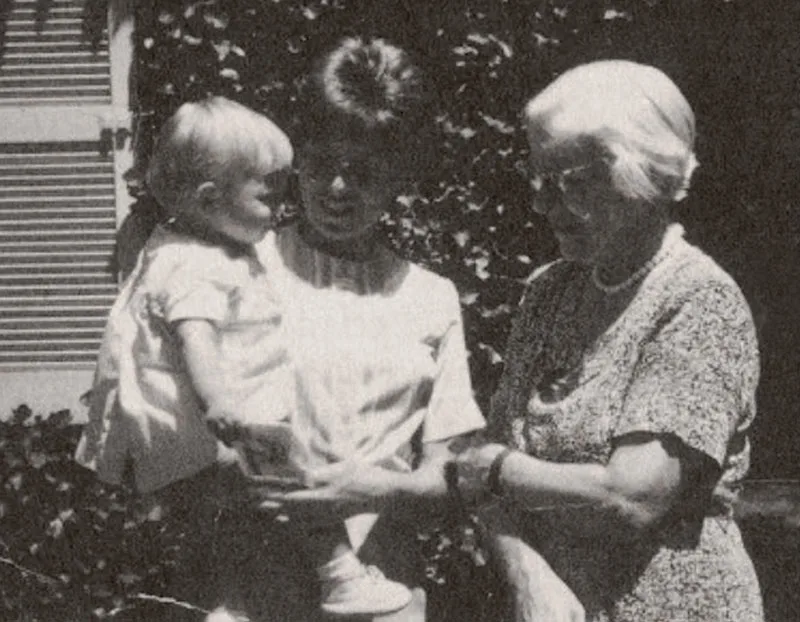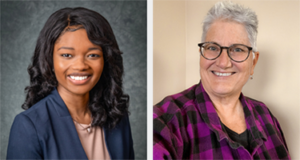
At a time when female physicians were rare and when many general practitioners questioned the necessity of specialists, Jeannette Munro, MD ’27, who earned her medical degree in the University of Wisconsin Medical School [now the UW School of Medicine and Public Health (SMPH)] Class of 1927, became the first pediatrician and first female physician in Princeton, New Jersey.[1]
Munro was also one of the first women in medical school to do her clinical training at the newly identified statewide site at Lutheran Hospital in La Crosse, Wisconsin, where she was inspired by members of the all-male physician group, most of whom were part of the Gundersen family, who shaped her clinical education. During her career, Munro rose as a force to be reckoned with and shattered countless glass ceilings.
Munro was born in Pennsylvania in 1894 to Alice Gardner Munro and Dana Carleton Munro, LHD, professor of European history at UW–Madison until 1915, and professor of history and chair of the Department of History at Princeton University for 12 years. As a child, Munro was an ardent writer and published award-winning poems, including “The Promise,” a poem about the perfect autumn day.[2] At age 21, she received her bachelor of arts degree at UW–Madison (1915) and went on to volunteer at the New York Charity Organization Society from 1915 to 1917. During this time, she furthered her studies as a student in the New York School of Social Work (1917) and as a research assistant (1918).[3]
In the early 1920s, Munro returned to Wisconsin to pursue her medical education at SMPH. During her fourth year at SMPH, Munro went to Lutheran Hospital, operated by the Gundersen family, to complete her clerkship training. Lutheran Hospital was one of 30 new statewide preceptor sites that were created when SMPH transitioned from a two-year to a four-year medical school in 1926. Lutheran Hospital’s name changed, and SMPH’s preceptorship program evolved. In 1996, this site became an academic campus, now known as Gundersen Health System/Western Academic Campus. It remains part of the SMPH statewide academic campus.
Despite being one of the first two female medical students at Lutheran Hospital, Munro was welcomed into the Gundersen medical community and immediately immersed into her role as a student doctor. Soon after arrival, she was shown how to inject contrast dye into a patient for gallbladder radiographs and asked to do the procedure under direct supervision on the next patient. Although initially hesitant, she was able to perform the procedure and was given increased autonomy to perform subsequent procedures by herself.[3]
Munro has noted that her time in La Crosse was marked by many rich lessons in life and medicine. A particularly salient one was that as a doctor, even one in training, an individual was regarded in a position of authority that they must be careful to never abuse. On one occasion, Munro was called into the room of a 7-month-old baby who was having a seizure. While she had read about seizures, she had never seen one — yet she was expected to take charge. She knew this was out of her scope, so she asked her attending physician for help. However, she soon understood there was little that could be done. Serendipitously, the little girl regained consciousness, and the mother exclaimed to her, “Doctor, I’m so grateful. The minute I saw you, I knew you would know what to do.”[3] Despite being equally as confused as the patient’s mother, Munro was perceived as knowledgeable, as though she “knew” what to do. Munro also learned hard lessons about death and the importance of empathy and physician presence in patient care. On another afternoon, she followed her attending into a dying patient’s room. The attending spoke gently and sympathetically to the patient’s daughter. There was no hope. Munro stayed in the room and sat in silence with the daughter as the patient took his last breath. She knew that there was nothing she could say in that moment that would ease the pain. All that she could do was provide her presence. These and many other lessons from La Crosse remained after medical school graduation.
About her learning experiences during her time in La Crosse, Munro noted in her writings, “The short (three month) preceptorship at La Crosse in the spring of 1927 is engraved on my memory as one of the most fertile learning experiences of my whole medical career. It was a transition period and time of maturation. At last, I was beginning to learn to be a doctor.”[3]
Lessons learned while in La Crosse shaped her approach throughout her pediatric residency at Worcester Memorial Hospital and Massachusetts General Hospital. After her residency, Munro joined the staff at Babies Hospital in New York, and in 1933, moved to Princeton, New Jersey, to establish a well-baby clinic. This move was met with much resistance, as at the time, the Princeton hospital staff comprised eight male physicians, and they were determined to keep the staff to those eight men. This did not last, and the need for specialists became clear as it was recognized that general practitioners were not equipped to handle all the dermatological, ophthalmological, or pediatric cases. Still, many denied the need for her expertise. The dean of staff, for example, was asked whether Princeton needed two pediatricians, and he stated, “It doesn’t need one.” Despite these obstacles, Munro became the town’s first practicing pediatrician and female physician.[1] [4] [5] [6]
Munro chronicled her humble beginnings as a new practitioner during the Great Depression. Her office was out of a spare bedroom, she stored pharmaceuticals in the family icebox, and she boiled syringes on her kitchen stove. Still, her fame quickly spread, and her services were requested all around Princeton. Mothers brought their children in for well-child checks, and if any of the children were sick, she performed home visits and used her car as an ambulance. House calls were $3.00, and office calls were $2.00.[5] [6] However, this was at the depth of the Depression, and many of these visits were never paid for.
In 1934, Munro became the school doctor of Princeton’s Nursery School, an integrated school with children from varying socioeconomic classes.[4] [5] The school was equipped with a cook, housekeeper, and head teacher, and it functioned as a “Head Start” of the 1930s, providing all-day day care for children of working mothers. This experience was very formative and provided important lessons, including the necessity of structure, social engagement, and nap time for young children. It also served as a training ground for diagnoses such as measles, scarlet fever, diphtheria, chickenpox, whooping cough, and ringworm. Later in her career, Munro partnered with various community organizations, including those that led polio-eradication vaccination campaigns.
Munro retired from the Princeton Hospital staff after three decades of practice in 1964 and resigned from the Princeton Nursery School in 1966. After retirement, she continued to work part time for several years in the local schools and donated services to the nursery school. Finally, in 1975, Munro fully retired from medicine and turned her energy to her childhood passion — writing. She wrote many “prolific and popular” memoirs for the Princeton Recollector and eventually decided to amplify her recollections in a full-length memoir, The Making of a Pediatrician: A GrassRoots Chronicle. Munro was a pioneer whose life was marked by firsts. She was a trailblazer as one of two first female medical students at SMPH and the first pediatrician in Princeton. SMPH and its statewide campuses celebrate the legacy of this exemplary physician.
About the Authors

Sharon-Rose Nartey, MD ’23, is completing an internal medicine-pediatrics residency at University of Pennsylvania and Children’s Hospital of Philadelphia. She earned her medical degree from SMPH. Her interests include advocacy, medical education reform, health disparity research, and mentoring students who are underrepresented in medicine.
Elizabeth M. Petty, MD ’86 (PG ’89), is the SMPH senior associate dean for academic affairs. She earned her medical degree from SMPH and completed a pediatrics residency at UW Health. She completed medical genetics and clinical molecular genetics fellowships and research training at the Yale School of Medicine. She was on the University of Michigan faculty prior to joining the SMPH faculty. Her interests include the professional and scholarly development of health professions learners.
They share interests in advancing inclusion and equity in medicine for women and other historically marginalized groups.
References
- “Dr. Munro 1st Female Physician at Princeton Hospital” (Princeton Hospital timeline), Princeton Herald, volume 10, number 49, October 6, 1933.
- St. Nicholas: An Illustrated Magazine for Young Folks, Jeannette Munro, Silver Badge winner and poem “The Promise,” 1909.
- “Way Back When, Education of a Pediatrician,” Jeanette Munro, MD, Meadow Lakes, 4-1-02, Hightstown, New Jersey, 08520; chapter 1, personal essay provided by Gundersen Health System.
- “Dr. Munro Speaks of Nursery Before PTA Audience,” The Princeton News, November 17, 1938.
- “Princeton’s First Pediatrician, Introductory Note,” Journal of the Historical Society of Princeton, number 5, Nathaniel Burt, editor, page 27, 1986.
- Multiple clippings of articles written by or about Jeanette Munro, MD, from 1933-1976, Princeton Recollector newsletter and Princeton Herald, provided by the Princeton Historical Society.